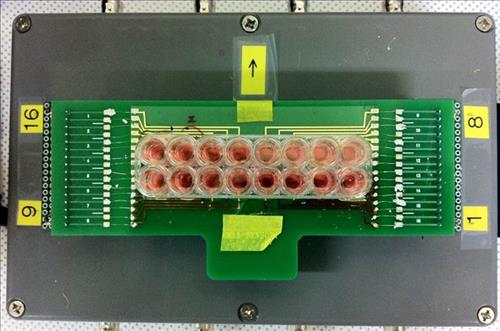
Measurement of those capacitance values, which strongly demonstrate real-time variations of drug effects, can be used to see permeability changes, as capacitance values are inversely proportional to permeability levels. (image: Center For Nano-Bio Measurement)
SEOUL, June 19 (Korea Bizwire) — Korean researchers have developed a method to estimate in real time the paracellular permeability of the blood-brain barrier (BBB), which works to prevent brain diseases such as Alzheimer’s disease and strokes by blocking inflammation and germs from entering the brain.
The high paracellular permeability of BBB is often linked with various brain diseases, and developers are actively creating drugs that lower the permeability. However, the development of such drugs has been held back by a lack of real-time information about theirs effect on the permeability.
Teams led by Dr. Lee Tae-geol at the Center For Nano-Bio Measurement and Prof. Kim Jeong-hoon at Seoul National University have developed a way to represent a permeability-inducing factor on BBB cells by differentiating the effects of drugs on real-time capacitance values of those cells cultured on a gold sensing electrode.
Measurement of those capacitance values, which strongly demonstrate real-time variations of drug effects, can be used to see permeability changes, as capacitance values are inversely proportional to permeability levels.
As the teams’ gold sensing electrode can act as a culturing ground for cells to be tested with various drugs, they are expecting to measure drug effects more quickly with their new method. The results were published in the June issue of Scientific Reports.
By Kevin Lee (kevinlee@koreabizwire.com)






